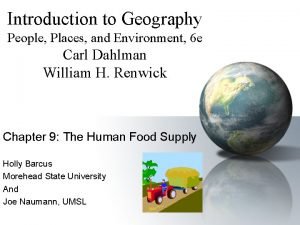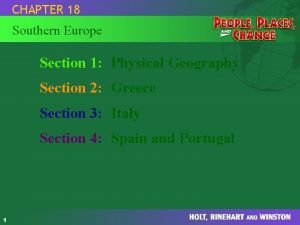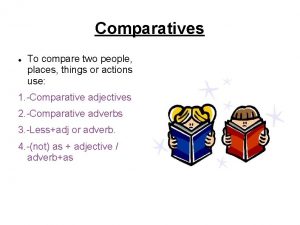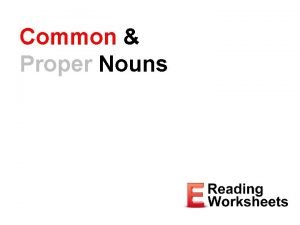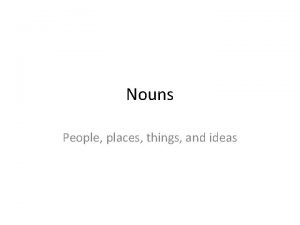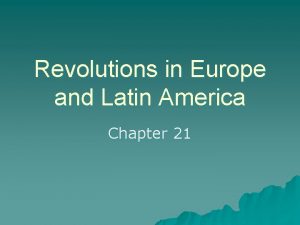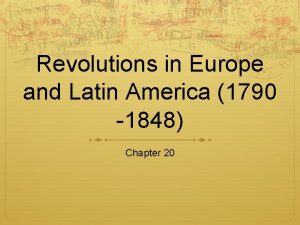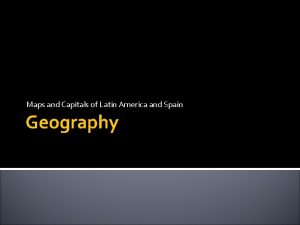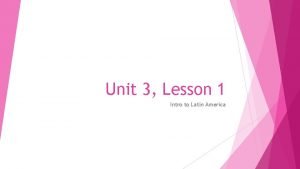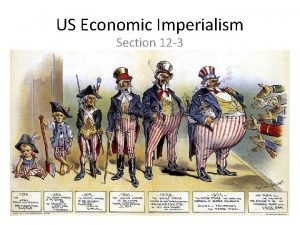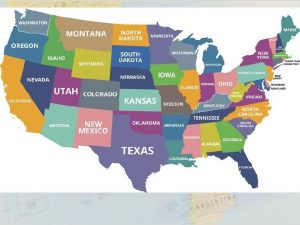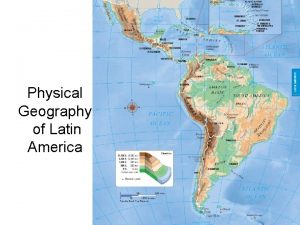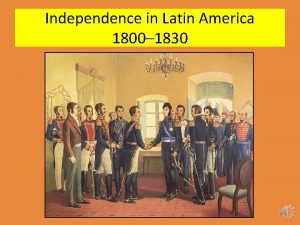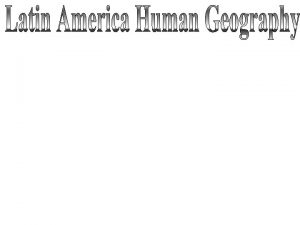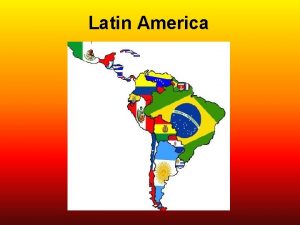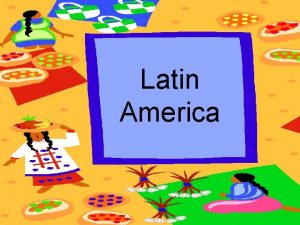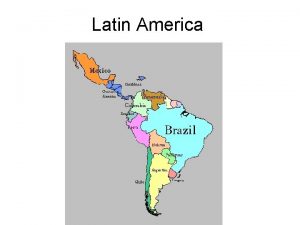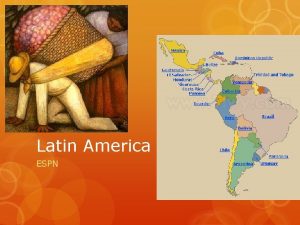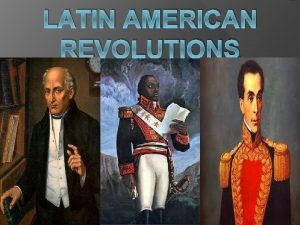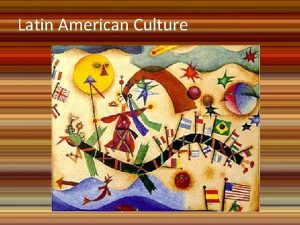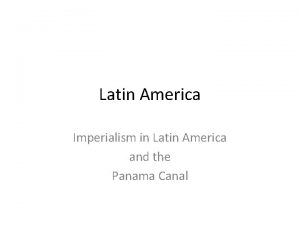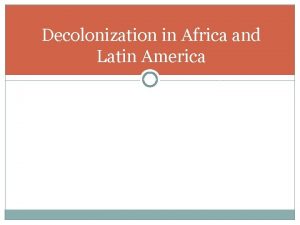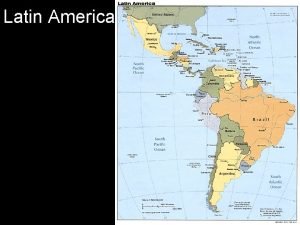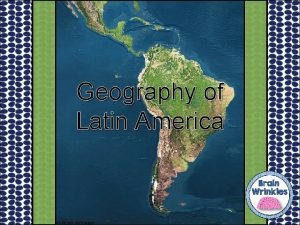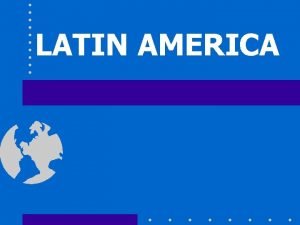Terms People Places and Economics of Latin America






































- Slides: 38

Terms, People, Places and Economics of Latin America

Mexico

Population and Cities • Mexican citizens are moving to the cities because of economic opportunities there. • Mexico’s population has doubled since 1970 and is largely very young.

NAFTA • Mexico is a member of NAFTA( North American Free Trade Agreement) along with the United States and Canada. This agreement has created a huge zone of cooperation on trade and economic issues. It is expected to contribute to the prosperity of the members

Oil and Manufacturing • Mexico’s economy includes a large industry based on it’s oil reserves in and along the Gulf of Mexico. • Profits from oil have helped finance development.

Maquiladoras • Many new factories are located in northern Mexico. These are called Maquiladoras, factories where imported materials are assembled into finished goods for export to the United States.

Emigration • Many workers leave Mexico to work in the United States. • Many send money back to their families and villages. • Mexico shares a 2000 mile border with the United States.

Work and School • Rapidly growing population and government policies have contributed to a shortage of jobs. • Without education and training, young workers cannot find jobs. Attendance in schools has improved. • Education will become even more important as Mexico becomes more industrialized.

Central America

Culture of Central America • Central America blends two major elements: Native American influences with those of Spanish settlers. • Spanish language is dominate in the region and Catholicism is the major religion.

Culture of the Caribbean • Residents of the islands are of Native American, European, African and mixed ancestry. • Africans brought to work on the sugar plantations left a lasting mark on all aspects of culture in the islands.

Cultural Hearth • Central America is a cultural hearth. A cultural hearth is the heartland or place of origin of a major culture. The Mayan people built a great civilization in the region.

Caribbean

Caribbean Influences • Africans were brought by slave traders to replace Taino natives working on plantations. • By the 19 th century, the Spanish, French, British, Dutch, and Danish all claimed islands in the Caribbean. Most Europeans were there to profit from sugar trade.

Farming • Sugar cane plantations in the Caribbean provide the largest export crop. • Many people work on the plantations but pay is poor, and as a result, average per-capita income in the Caribbean is very low.

Terrace Farming • Terrace farming is a type of farming that was developed first by the Inca people. This method of farming uses "steps that are built into the side of a mountain or hill.

South America

Education • Literacy rates in South America are higher than in other parts of Latin America. • A higher literacy rate means more people are educated and can get a better job.

Brazil Industrial Power • Natural resources (Iron, gold, silver, titanium) make Brazil an industrial power. • More than a 1, 000 rivers including the Amazon flow through Brazil, meaning Power Plants are located along these rivers producing electricity. • Also large reserves of Oil and Natural gas contribute to its industrial might.

• • • Chile is South America’s greatest success story, due to participation in the global economy by trading the products in its mines and fields as far as Japan Chile is an associate member of Mercosur is an economic common market that began operating in the southern cone of South America in 1995. ** Goals of a free-trade zone among member nations: 1. to make member economies more stable; 2. to increase trade within region and thereby decrease dependency on unstable global markets; 3. to channel some of the profits of improving economies to those people and groups that most need help. Chile

Doldrums • Sailors noticed the stillness of the rising (and not blowing) air near the equator and gave the region the depressing name "doldrums. • “ The doldrums, usually located between 5° north and 5° south of the equator, are also known as the Intertropical Convergence Zone or ITCZ for short. • The trade winds converge in the region of the ITCZ, producing convectional storms that produce some of the world's heaviest precipitation regions. • The ITCZ moves north and south of the equator depending on the season and solar energy received. The location of the ITCZ can vary as much as 40° to 45° of latitude north or south of the equator based on the pattern of land ocean. The Intertropical Convergence Zone is also known as the Equatorial Convergence Zone or Intertropical Front. • http: //daphne. palomar. edu/pdeen/Animations/23_Weather. Pat. swf

Columbian Exchange • The Columbian Exchange was a dramatically widespread exchange of animals, plants, culture, human populations (including slaves), communicable disease, and ideas between the Eastern and Western hemispheres (Old World and New World). • The Columbian Exchange greatly affected almost every society on Earth. New diseases introduced by Europeans, to which the indigenous peoples of the Americas had no immunity, depopulated many cultures.

Cordillera • A cordillera is an extensive chain of mountains or mountain ranges, that runs along a coastline (e. g. the Andes).

Isthmus of Panama • The Isthmus of Panama, is the narrow strip of land that lies between the Caribbean Sea and the Pacific Ocean, linking North and South America.

Altiplano • in west-central South America, where the Andes are at their widest, is the most extensive area of high plateau on Earth outside of Tibet.

Mesoamerica • is a region and culture area in the Americas, extending approximately from central Mexico to Belize, Guatemala, El Salvador, Honduras, Nicaragua, and Costa Rica, • This region shares cultural factors identifying it as a cultural region such as language, remnants of Spanish colonization, flourishing societies.

2010 Haiti Earthquake • United States Geological Survey (USGS) called it the strongest earthquake since 1770 in what is now Haiti • The quake struck on January 12, 2010 at 4: 53 p. m. • The 7. 0 magnitude quake's epicenter hit just 10 miles west of Porte-au. Prince and its 2 million inhabitants • 3 million people in need of emergency aid after major earthquake • The major quake sent 33 aftershocks ranging in magnitude from 4. 2 to 5. 9


South America’s Size ▄4 th largest continent ▄ 6, 879, 000 sq miles ▄ 12% of the earth’s land 29

Latin America’s Population Distribution

Deforestation in the Amazon

Original Forest Cover Current Forest Cover Future Forest Cover

Amazon River ▄ 4, 300 miles long ▄ Flows through 6 countries ▄ No bridges cross it ▄ 2 nd Longest River in the world ▄ Satellite View 33

Deserts ▄ Atacama Desert is the worlds’ driest ◄ ▄ Patagonian Desert► Largest in Americas/5 th in the world 34

Rainforest Half of the rainforest in the world is in the Amazon region 35

Andes Mountains . Andes stretch 4, 000 miles from the north to the south, thus making it the longest mountain range in the world. In Chile, it rises to over 20, 000 feet. 36

Desertification • Conversion of marginal rangeland or cropland to a more desert like land type. Desertification can be caused by overgrazing, soil erosion, prolonged drought, or climate change

Panama Canal • Panama Canal is a shipping canal that cuts across Central America, connecting the Atlantic and Pacific Oceans. • The canal made possible the exchange of both goods and ideas.
 Why is it called latin america
Why is it called latin america Unit 1 people and places
Unit 1 people and places People and places
People and places People and places
People and places Earth google
Earth google Polynomial degrees and terms
Polynomial degrees and terms Unlike terms
Unlike terms Maastricht university school of business and economics
Maastricht university school of business and economics Comparatives places
Comparatives places Nouns places
Nouns places People places leisure
People places leisure Chapter 7 congress at work
Chapter 7 congress at work Safe people safe places
Safe people safe places Places, things, ideas.
Places, things, ideas. Nouns ideas persons places things
Nouns ideas persons places things Revolutions in europe and latin america section 2 quiz
Revolutions in europe and latin america section 2 quiz Mountain ranges in south america map
Mountain ranges in south america map Bolivia christmas food
Bolivia christmas food Revolutions in europe and latin america
Revolutions in europe and latin america Latin america and spain map
Latin america and spain map Lesson 1 physical geography of south america
Lesson 1 physical geography of south america Rap of the states
Rap of the states Asia europe north america
Asia europe north america Repetition in let america be america again
Repetition in let america be america again Happening body art
Happening body art What is mathematical economics
What is mathematical economics Example of people in media and people as media
Example of people in media and people as media Grave in music terms
Grave in music terms Peninsularies
Peninsularies Economic imperialism definition
Economic imperialism definition Literacy rate of south america
Literacy rate of south america Middle america
Middle america Physical geography of latin america worksheet answers
Physical geography of latin america worksheet answers Example of griffin ford model
Example of griffin ford model Geography of latin america color by number
Geography of latin america color by number Physical geography of south america webquest
Physical geography of south america webquest Latin america hierarchy
Latin america hierarchy Largest economy in latin america
Largest economy in latin america Great leap forward communes
Great leap forward communes



